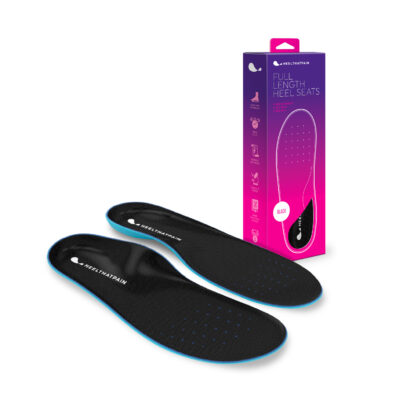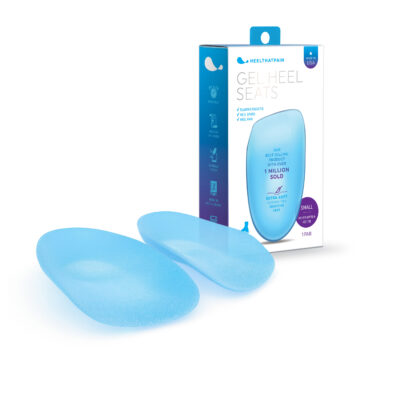
When it comes to finding solutions for heel pain caused by plantar fasciitis or spurs, the treatment options can seem endless and confusing.
It’s a double-edged sword: luckily there are plenty of affordable ways you treat your heel pain that can make a huge difference in its severity and duration, but on the flipside, there is no one solution that works for everyone. And to make it more complicated, while one treatment may work temporarily, others can be more effective over the long term.
The most important thing is to take immediate action when you notice heel pain rather than waiting and allowing it to get worse. Here are some remedies ranging from free to $30 to help you on your way to healing.
*Note: now all of these ideas will work for everyone, and some of them simply help manage symptoms of heel pain rather than treating the root cause. It’s important to work with your doctor to create a treatment plan just for you whenever you experience severe or prolonged pain.
1. Icing
Icing is a go-to solution for many types of injuries and ailments. It can help reduce inflammation and pain,
You can ice away heel pain for free by putting ice cubes in a plastic bag and holding it to the bottom of your foot, or invest $19.95 in Ice Therapy Slippers to make the process much easier and more comfortable.
Icing is usually seen as a temporary way to alleviate symptoms rather than treating them in the long term.
2. Stretching
Stretching is one of the top-recommended home remedies for heel pain. And its effectiveness has been well documented in research over the past several decades. We recommend stretching at least twice daily, including first thing in the morning, and before doing any exercises.
We’ve pulled together tons of FREE resources to help you learn the best stretches for heel pain.
3. Heel Seats
Heel Seats are one of the top orthotic inserts if you have heel pain, especially from plantar fasciitis. In a clinical study, they were shown to be twice as effective as one of the top brands you find in drugstores.
Heel Seats are the only shoe inserts that use patented Fascia Bar Technology — a small lump in the insert that applies therapeutic pressure to the base of your heel, where it meets the arch of your foot.
Heel Seats cost only $29.95, plus they are 100% guaranteed, so there is no risk to try them, even if they don’t end up working out for you.
4. Self-massage
Getting a foot massage professionally can run up to $100 an hour, but having your partner massage your feet or even giving yourself a massage can also be helpful!
Massage can help temporarily reduce the pain in your feet, and it promotes blood flow to the area which can be helpful in the long-term healing of an injury.
You can massage your feet absolutely free, or get a massage ball so that you can massage hands-free while sitting in a chair. Massage balls are only $19.95 for a three-pack, which works out to be around $6.5 each.
5. Rest
Resting is one of the best things that you can gift to yourself if you have heel pain — and in general, it’s free! If you notice heel pain developing after a long run, take a few days off before doing your next workout.
Unfortunately for people who have very active jobs, resting can be quite costly in that you have to miss work. If your pain is so severe that you are unable to function in your role, see if you may be able to use sick days or short-term disability to rest and recover.
6. Compression
While there’s not a ton of evidence that compression specifically aids in the healing of plantar fasciitis, some people find that compression provides soothing support and added comfort. Compression works by applying pressure to the fascia of your foot and heel, which can help improve circulation and provide extra support.
You can test out compression using an Ace bandage or something similar that you may already have at home, or try out our medical-grade Compression Socks (which truly are the most comfortable socks you’ll ever wear).
7. Immobilization
It’s common to see someone get a cast after breaking a leg or arm — this is a form of immobilization. In the case of heel pain, some people find it helpful to “immobilize” their foot or heel for a while, which is a way to allow it to rest even if you’re doing a mild activity.
Medical casts and braces can be very expensive, but it might be something that your health insurance covers if your doctor agrees that immobilization might be helpful. Otherwise, an Ace bandage or something similar that you have lying around your home may also help.
8. NSAIDs (anti-inflammatories)
Anti-inflammatories will do little to cure heel pain but can provide at least a little bit of pain relief in the short term for some people. Over-the-counter medicines like Advil and Aleve help reduce swelling and inflammation in your feet, and can reduce the pain as well. Typically you can find NSAIDs for around $5 a bottle at any drug store or supermarket.
9. Foot exercises
While exercises like running and jump rope can worsen heel pain, doing exercises to strengthen your feet can help improve conditions like plantar fasciitis. The marble exercise is one of our favorite ways to work the muscles of your feet.
10. Switching shoes
While a good pair of shoes usually cost more than $30, just switching to a different pair of shoes that you already own can be helpful to improve your heel pain. Plantar fasciitis sufferers should look for shoes that fit properly, have relatively inflexible soles and have sufficient arch support.
If you don’t currently own a pair of shoes that fit the bill, you can sometimes find like-new name brand shoes at thrift stores like Goodwill for less than $30.
With so many expensive gimmick treatments out there, it’s hard to tell what’s true and what’s a myth when it comes to heel pain treatments. We always recommend that people with mild heel pain start out with affordable home remedies like stretching and icing before looking towards pricy advanced treatments.



